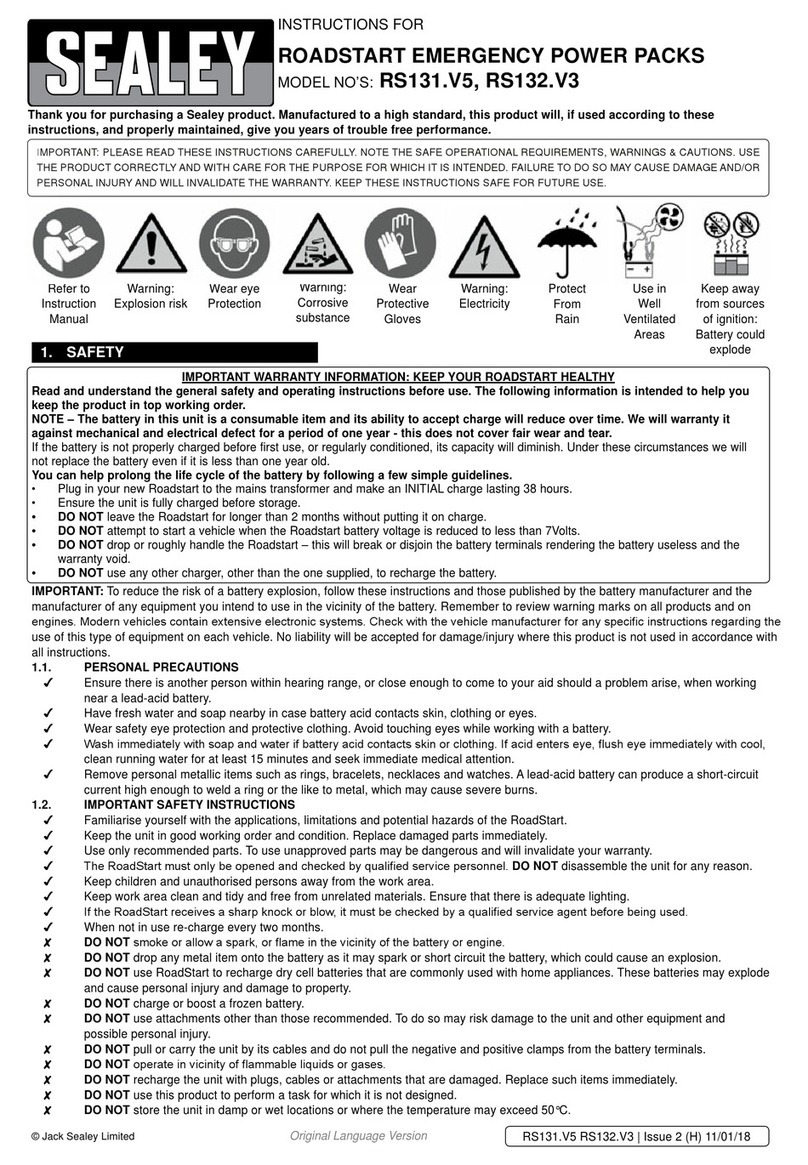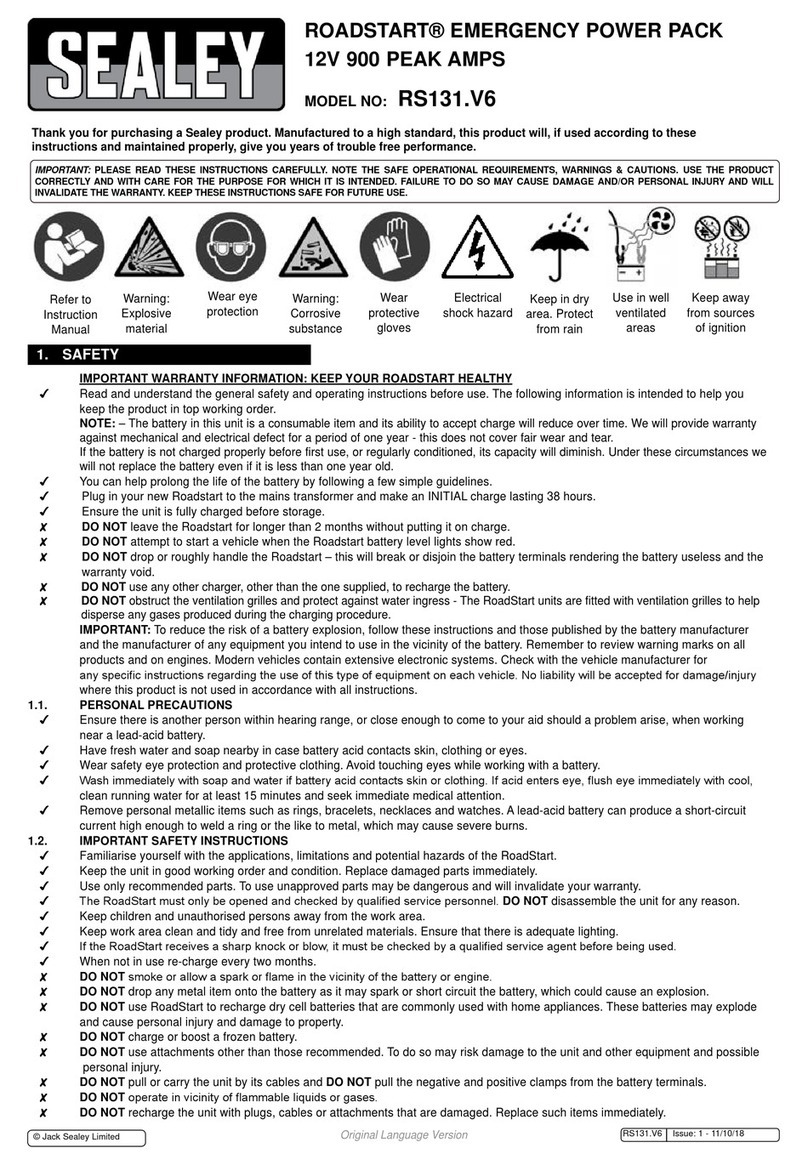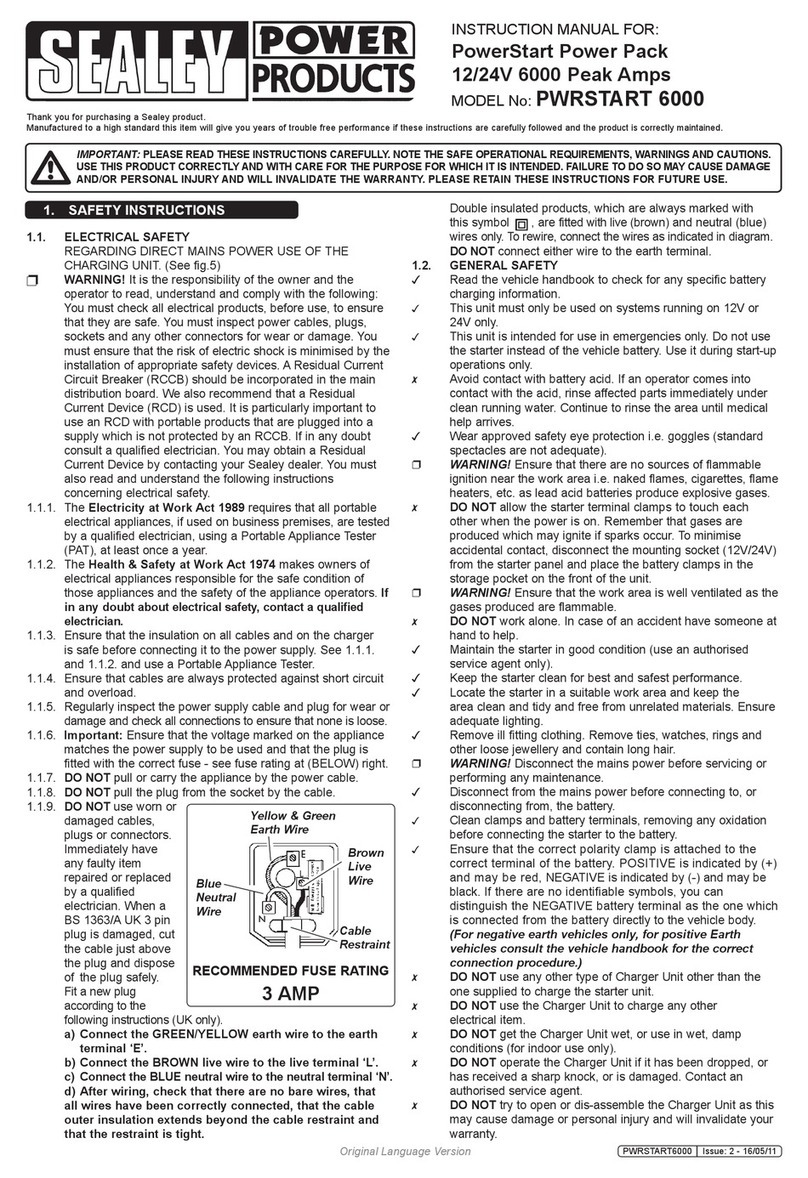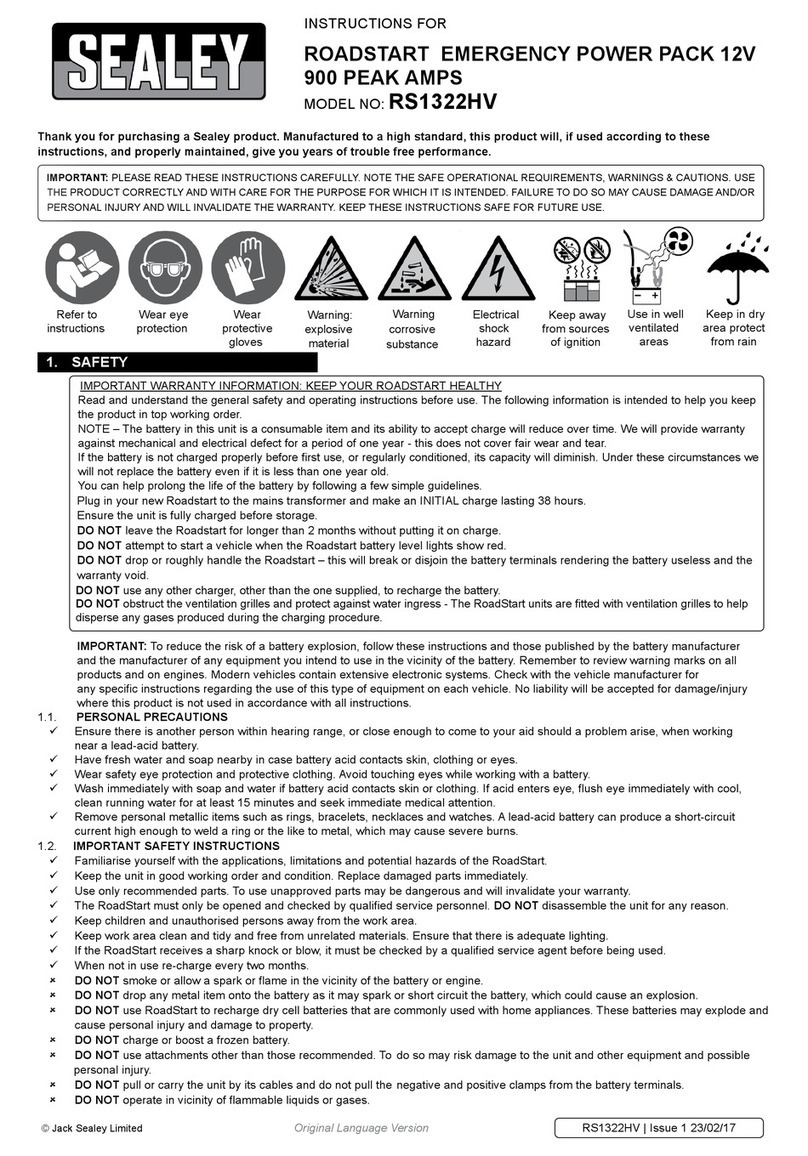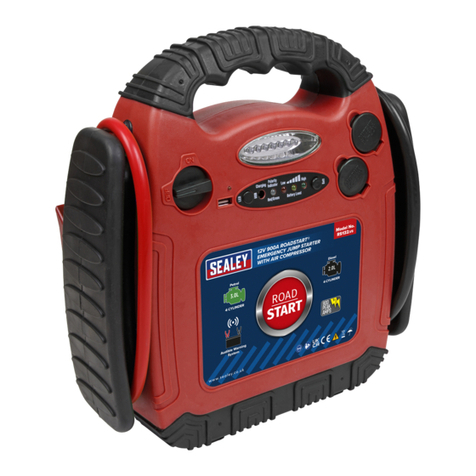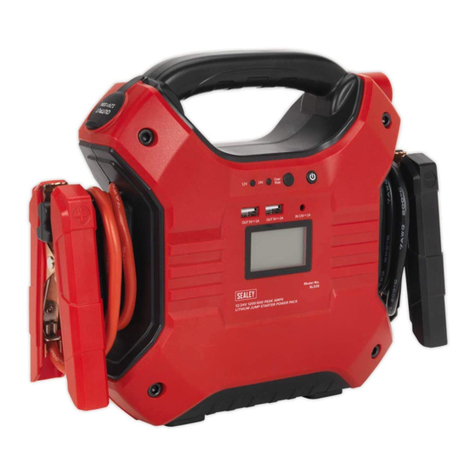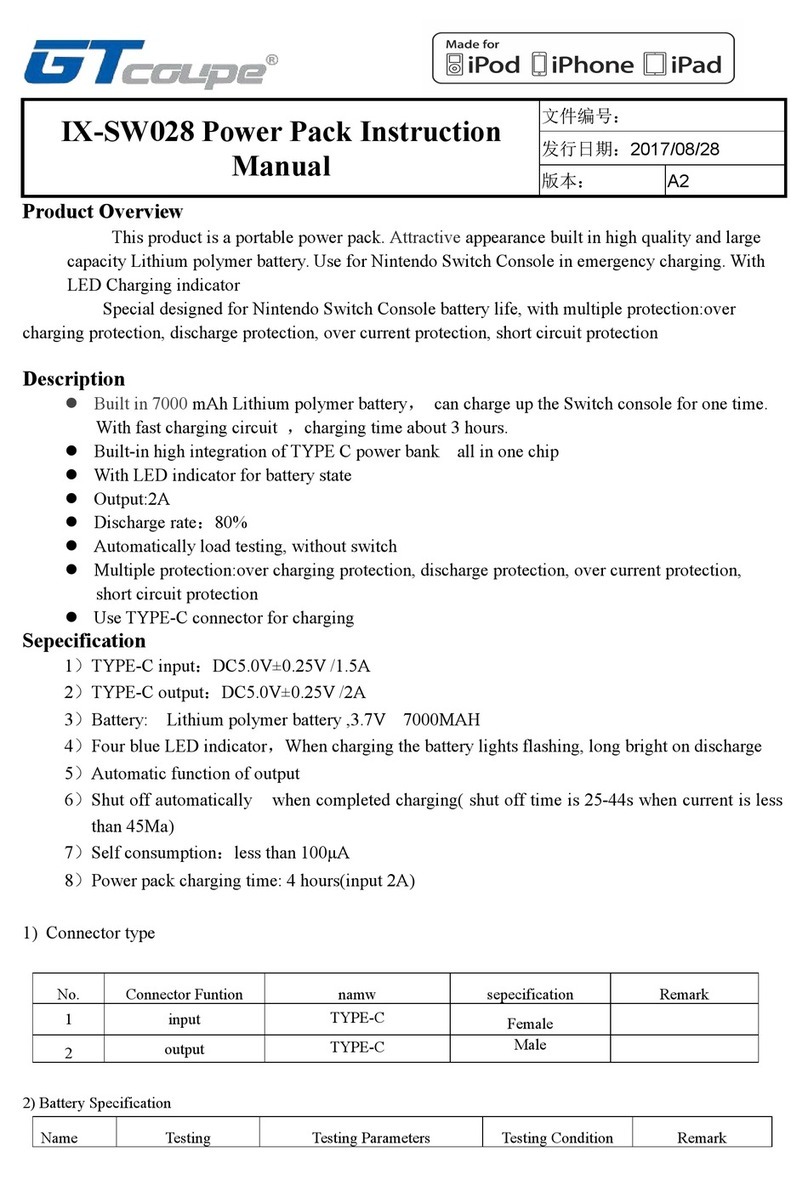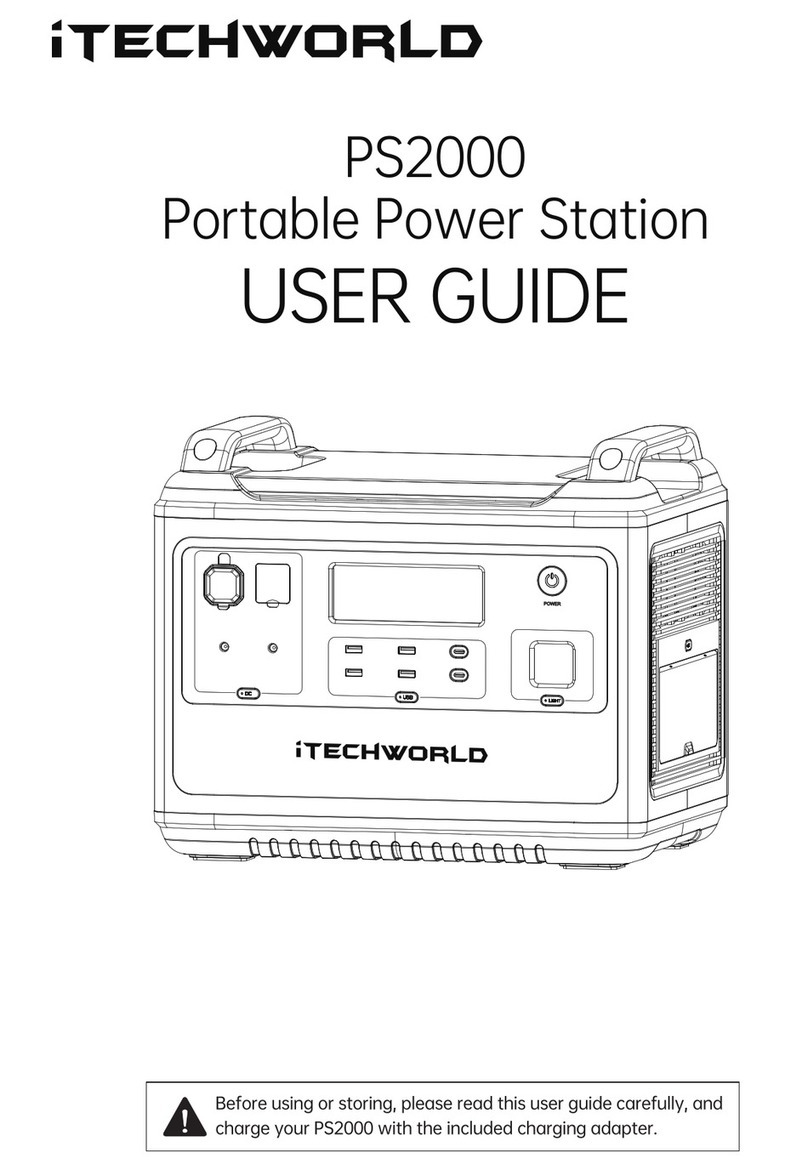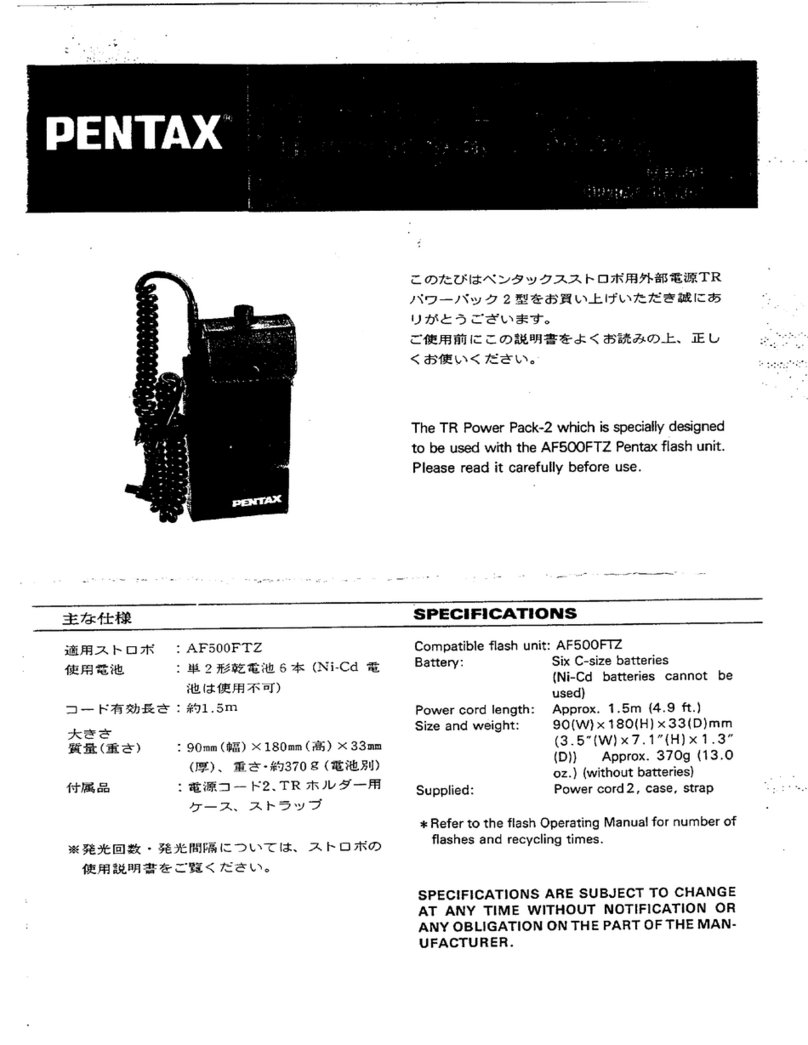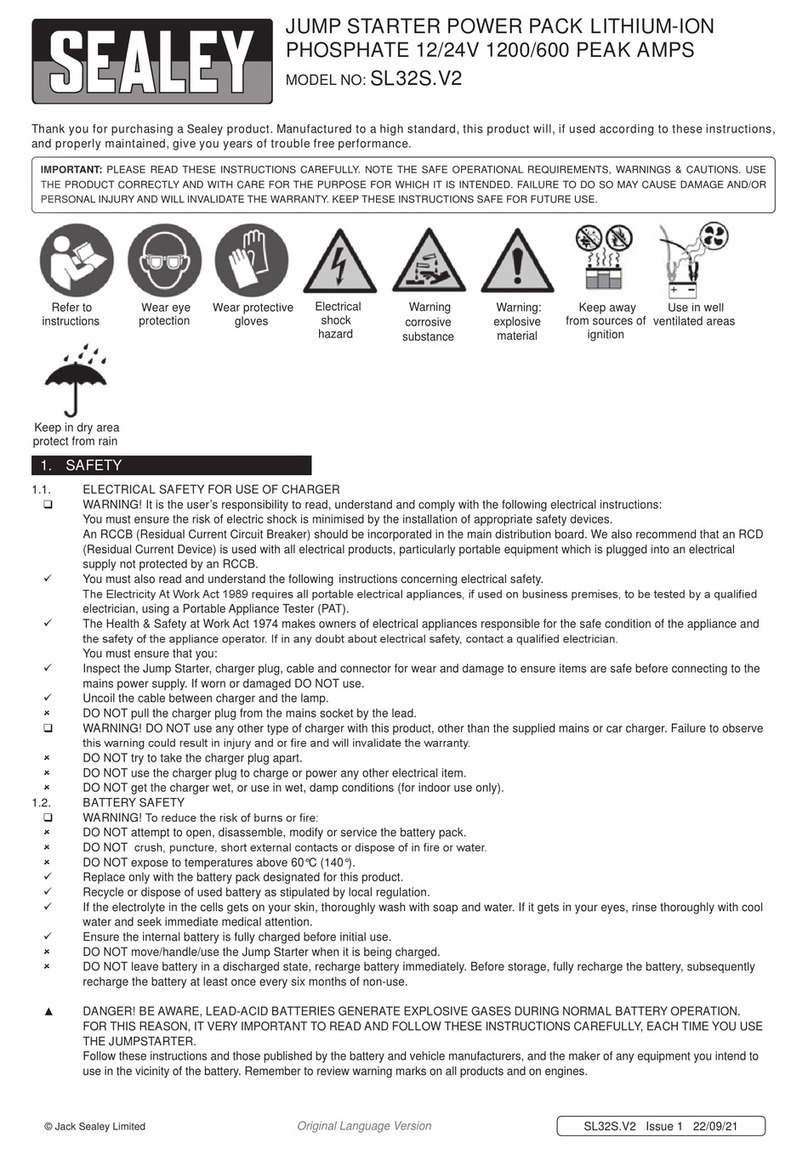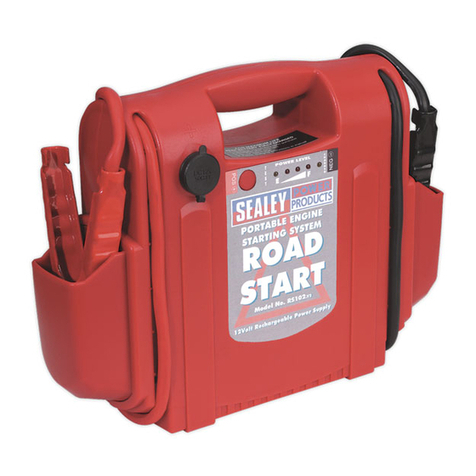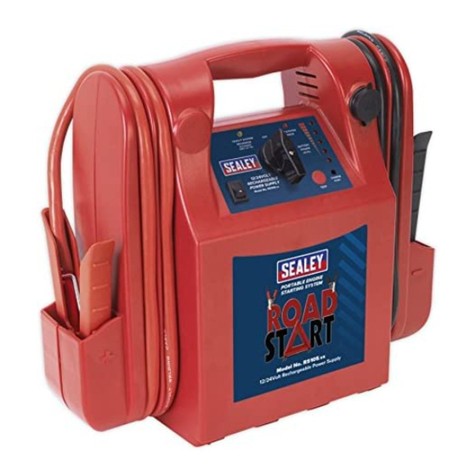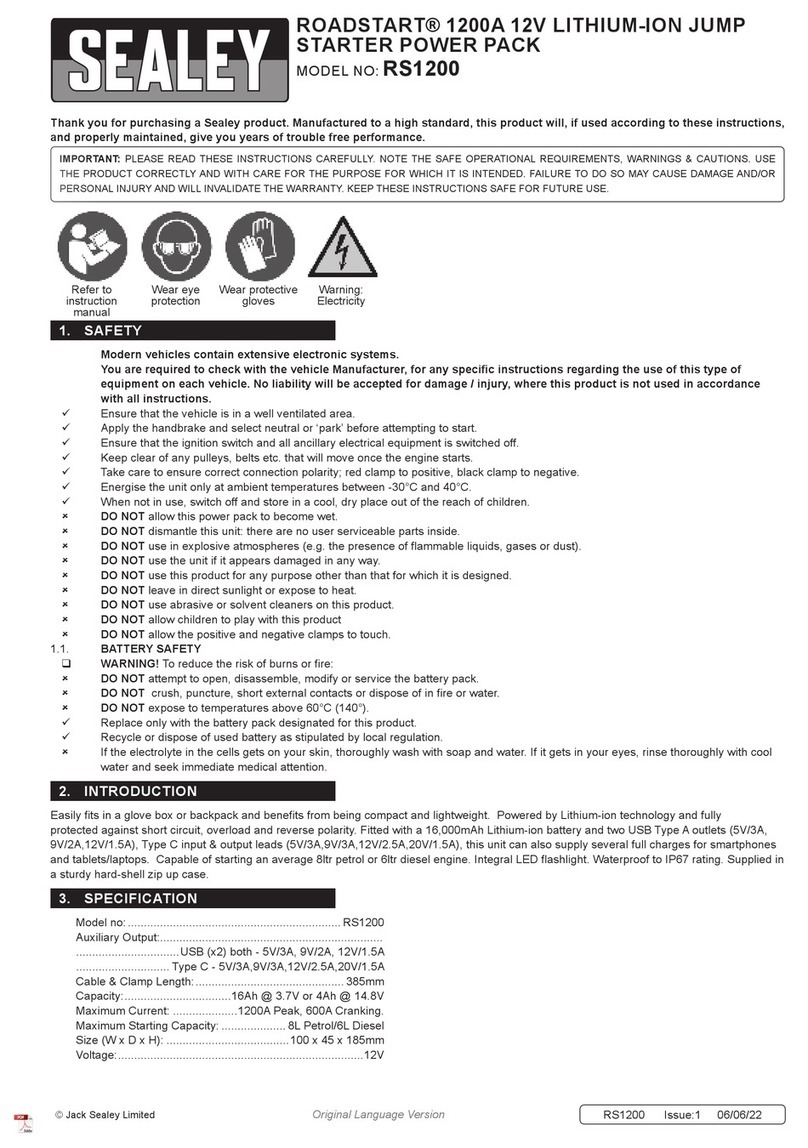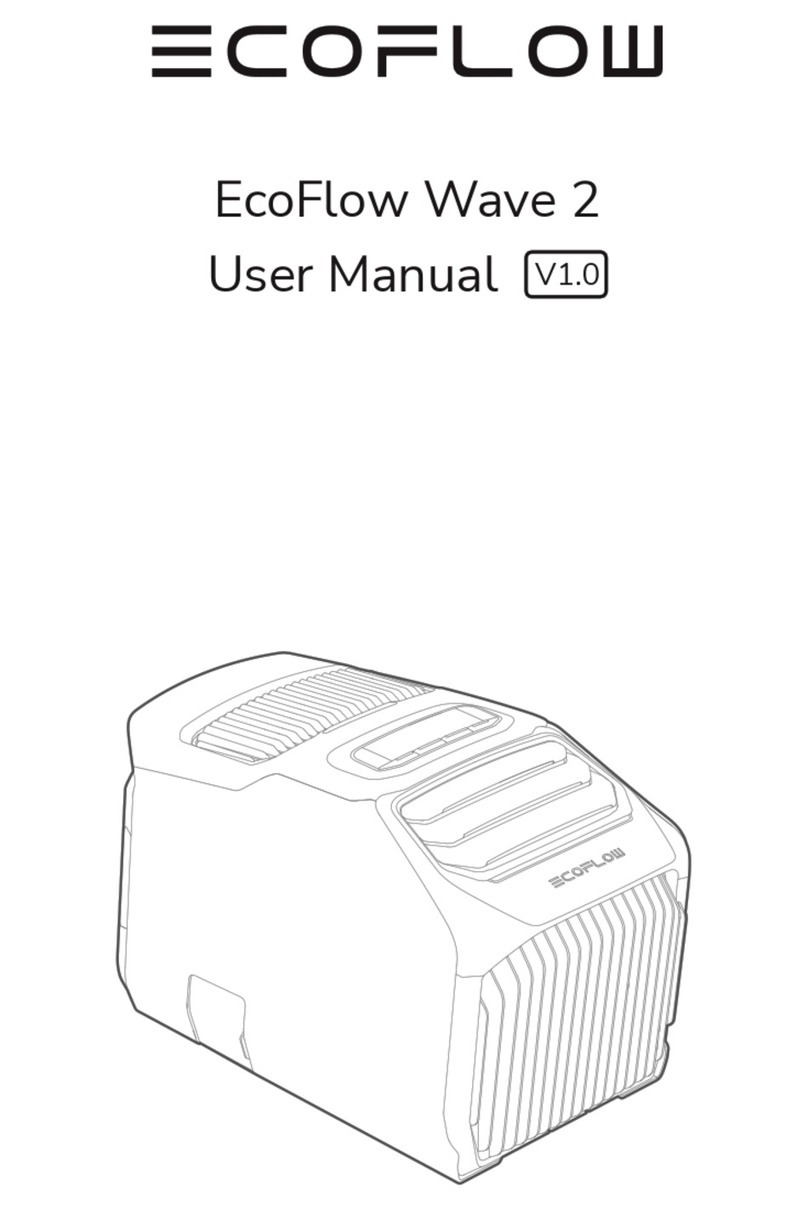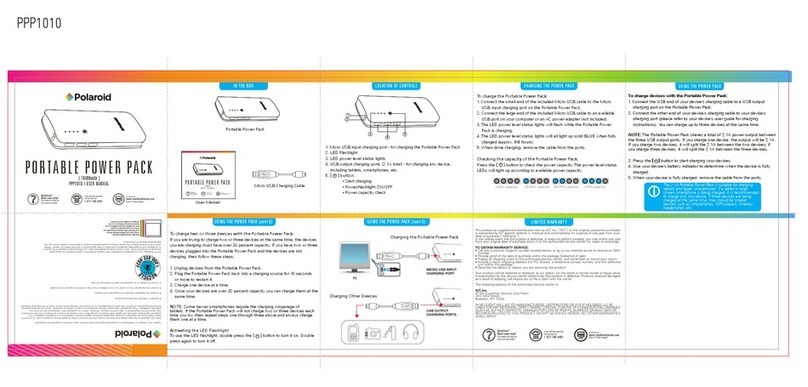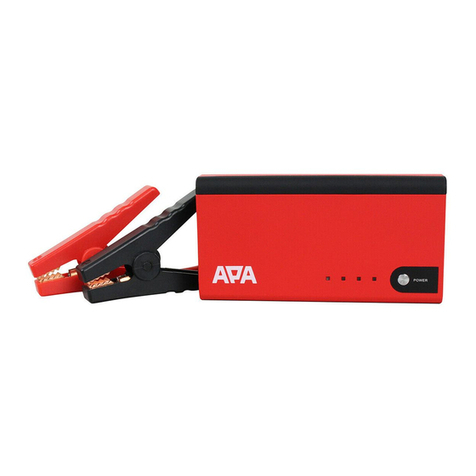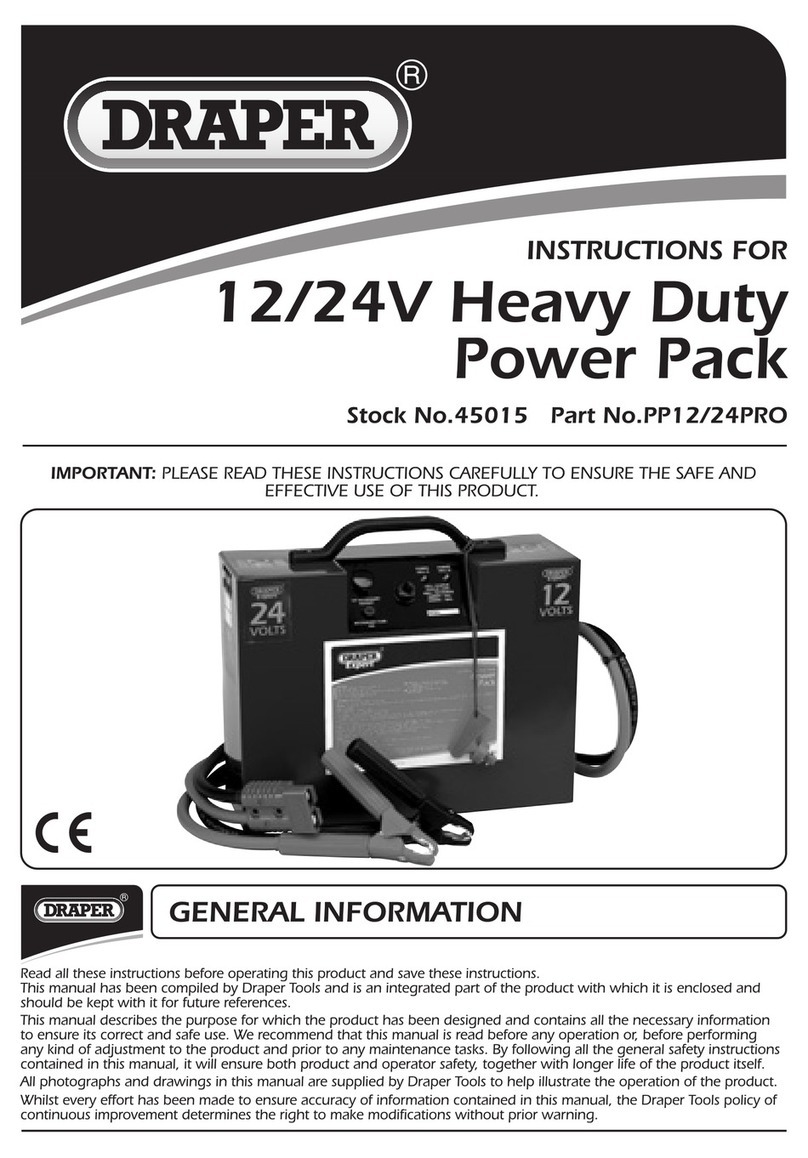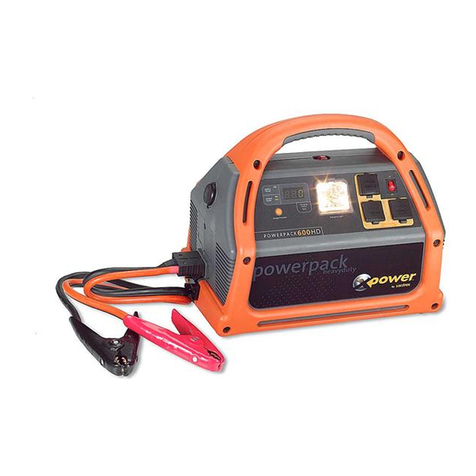
© Jack Sealey Limited Original Language Version PBI1812S Issue: 1 - 30/04/14
Model: ..........................PBI1812S
Starting Current: ...................323A
Peak Amps: ........................1700A
Voltage:...................................12V
Auxiliary Output: .....................12V
Cable & Clamp Length: ......0.6mtr
Weight: ................................ 7.2kg
1.3 ELECTRICAL SAFETY (with respect to mains chargers)
WARNING! It is the user’s responsibility to check the following:
You must check the AC adaptor to ensure that it is safe before using. You must inspect the power supply lead, plugs and all electrical
connections for wear and damage.
You must ensure the risk of electric shock is minimised by the installation of appropriate safety devices. An RCCB (Residual Current
Circuit Breaker) should be incorporated in the main distribution board. We recommend that an RCD (Residual Current Device) is used
with all electrical products.
It is particularly important to use an RCD with portable products that plug into an electrical supply not protected by an RCCB. If in doubt
consult a qualified electrician. You can obtain a Residual Current Device through your Sealey dealer.
You must read and understand instructions concerning electrical safety.
1.3.1 The Electricity At Work Act 1989 requires all portable electrical appliances, if used on business premises, to be tested by a qualified
person, using a Portable Appliance Tester (PAT), at least once a year.
1.3.2 The Health & Safety at Work Act 1974 makes owners of electrical appliances responsible for the safe condition of the appliance and
the safety of the appliance operator. If in any doubt about electrical safety, contact a qualified electrician.
1.3.3 DO ensure that the insulation on all cables and the product itself is safe before connecting to the mains power supply.
1.3.4 DO ensure that cables are always protected against short circuit and overload.
1.3.5 DO regularly inspect power supply, leads, plugs for wear and damage and power connections to ensure that none is loose.
1.3.6 DO check product voltage is the same as power supply to be used and check that all fused plugs are fitted with the correct capacities.
2. INTRODUCTION
3. SPECIFICATION
22Ah Professional grade, high output AGM battery especially formulated to jump start vehicles. Fully sealed battery enables the unit to be stored
in any position. Features a lightweight, high impact casing, which is durable and corrosion proof for easy portability. Battery status LEDs indicate
to the user when the battery is at full power, 75% charge, 50% charge or less and when the unit needs to be recharged. A fusible link integrated
in the output cable gives increased protection to the unit, while making for an easier fuse charge without disassembly. On/off switch for safety
and control. Features 12V accessory outlet including overload and short circuit protection.
4. OPERATION
WARNING! RISK OF CONTACT WITH BATTERY ACID. BATTERY ACID IS A HIGHLY CORROSIVE SULPHURIC ACID.
4.1. Preparing to use the RoadStart
4.1.1. Clean the battery terminals before using the RoadStart. During cleaning, keep airborne corrosion from coming into contact with your
eyes, nose and mouth. Use baking soda and water to neutralise the battery acid and help eliminate airborne corrosion. DO NOT touch
your eyes, nose or mouth.
4.1.2. Determine the voltage of the battery by referring to the owner's manual and make sure the output voltage of the RoadStart is correct.
4.1.3. Make sure the RoadStart cable clips make tight connections.
4.2. Connecting to a battery
WARNING! A SPARK NEAR THE BATTERY MAY CAUSE AN EXPLOSION. REDUCE THE RISK OF A SPARK NEAR A BATTERY:
4.2.1. Attach the output cables to the battery and chassis as indicated below. Never allow the output clips to touch each other.
4.2.2. Position the DC cables to reduce the risk of damage to the bonnet, door and moving or hot engine parts.
Note: If it is necessary to close the bonnet during the jump starting process, ensure the bonnet does not touch the metal part of the
battery clips or cut the insulation of the cables.
4.2.3. Stay clear of fan blades, belts, pulleys and other parts which can cause injury.
4.2.4. Determine which post of the battery is grounded (connected) to the chassis. If the negative post is grounded to the chassis (as in most
vehicles), see step 4.2.5. If the positive post is grounded to the chassis, see step 4.2.6.
4.2.5. For a negative-grounded vehicle, connect the POSITIVE (RED) clip from the roadstart to the POSITIVE (POS, P, +) ungrounded post of
the battery. Connect the NEGATIVE (BLACK) clip to the vehicle chassis or engine block away from the battery. DO NOT connect the clip
to the carburetor, fuel lines or sheet-metal body parts. Connect to a heavy gauge metal part of the frame or engine block.
4.2.6. For a positive-grounded vehicle, connect the NEGATIVE (BLACK) clip from the RoadStart to the NEGATIVE (NEG, N, -) ungrounded
post of the battery. Connect the POSITIVE (RED) clip to the vehicle chassis or engine block away from the battery. DO NOT connect
the clip to the carburettor, fuel lines or sheet-metal body parts. Connect to a heavy gauge metal part of the frame or engine block.
4.2.7. When disconnecting the RoadStart, remove the clip from the vehicle chassis, then remove the clip from the battery terminal, in that
order.
4.3. Charging the internal battery of the RoadStart
IMPORTANT: CHARGE IMMEDIATELY AFTER PURCHASE, AFTER EACH USE AND EVERY 30 DAYS TO KEEP THE ROADSTART
INTERNAL BATTERY FULLY CHARGED. NEVER WAIT UNTIL THE ROADSTART IS COMPLETELY DISCHARGED BEFORE
RECHARGING.
4.3.1. IMPORTANT: The switch must be in the OFF position while checking the status and charging the unit.
